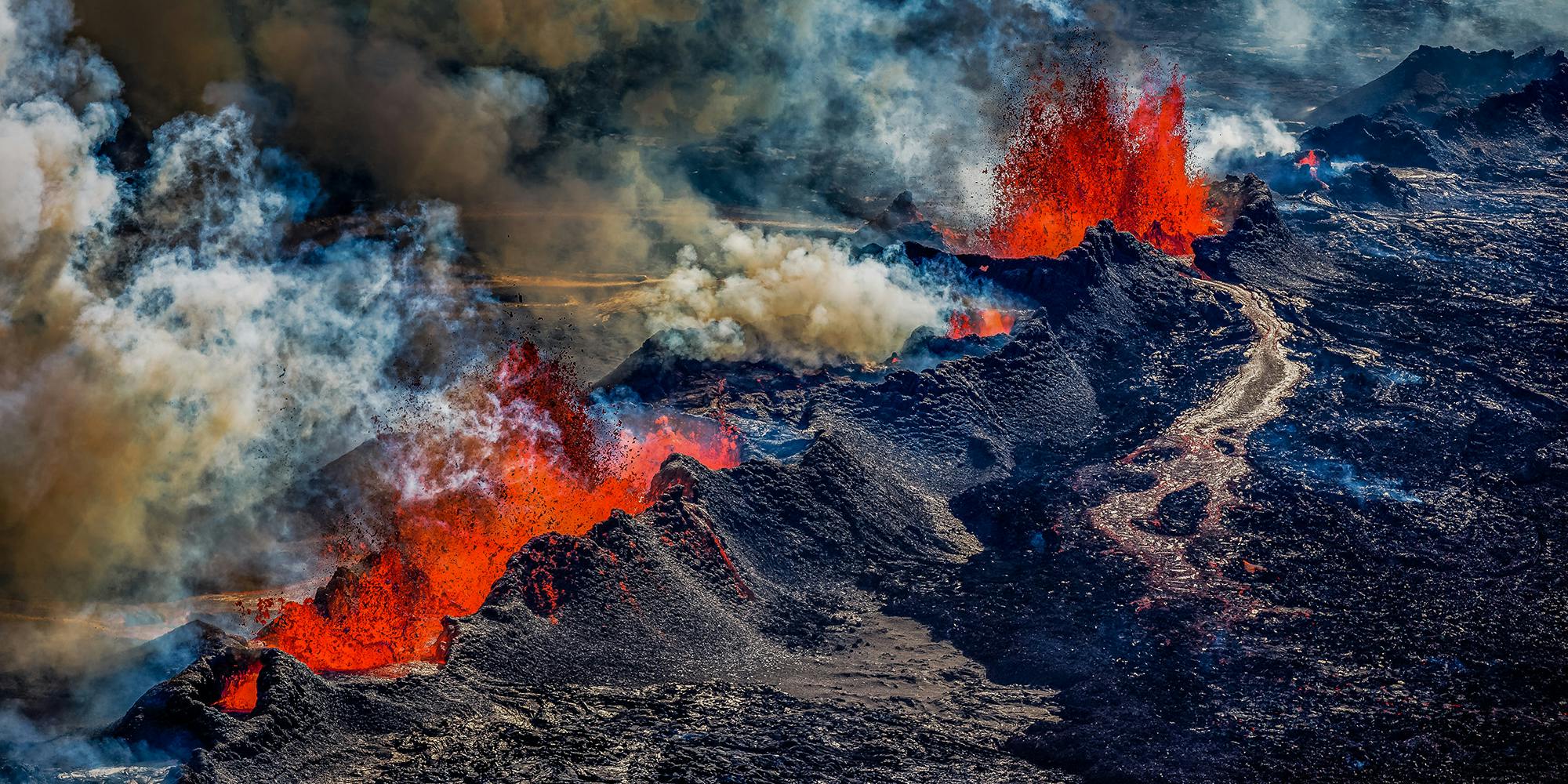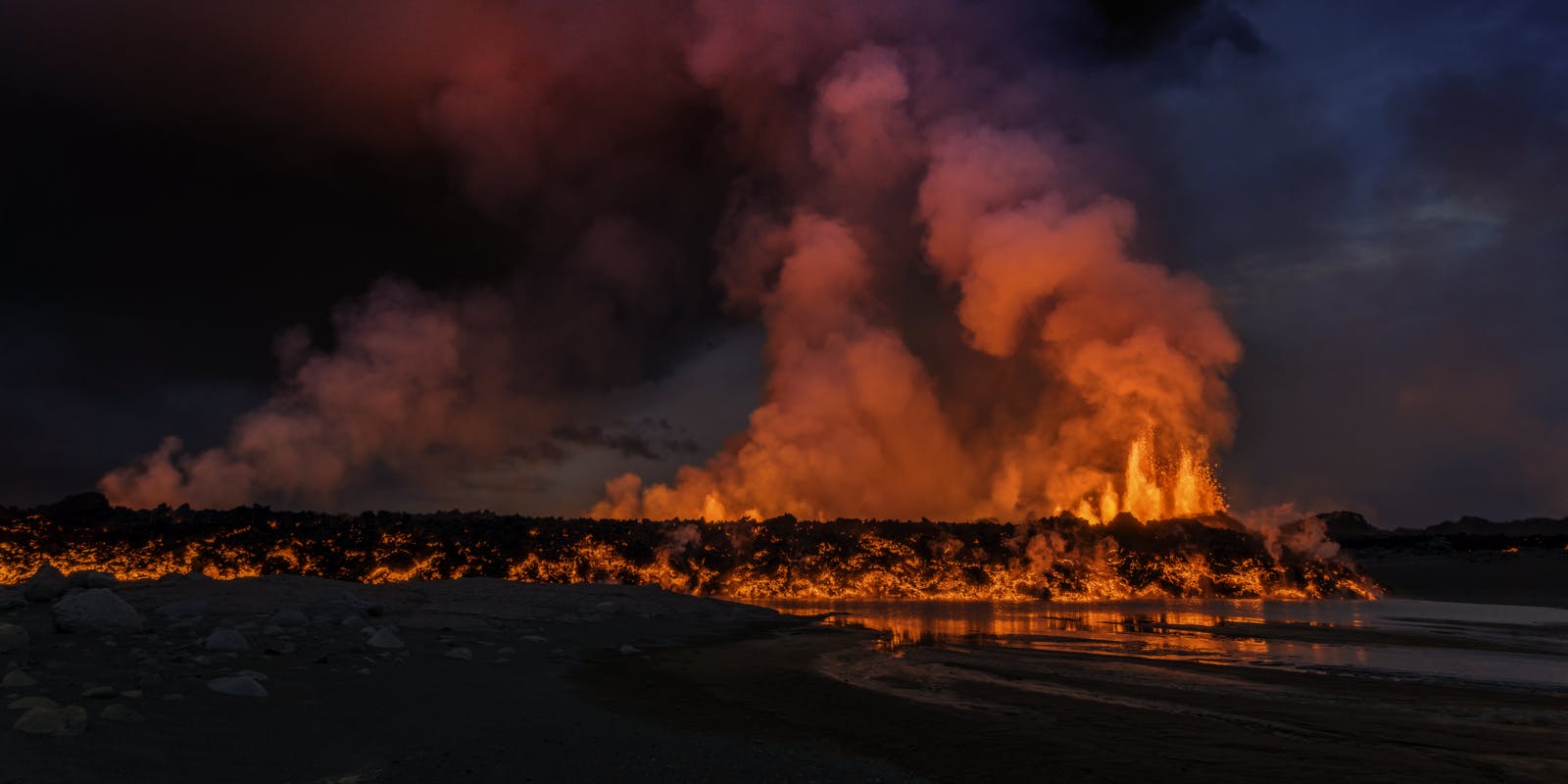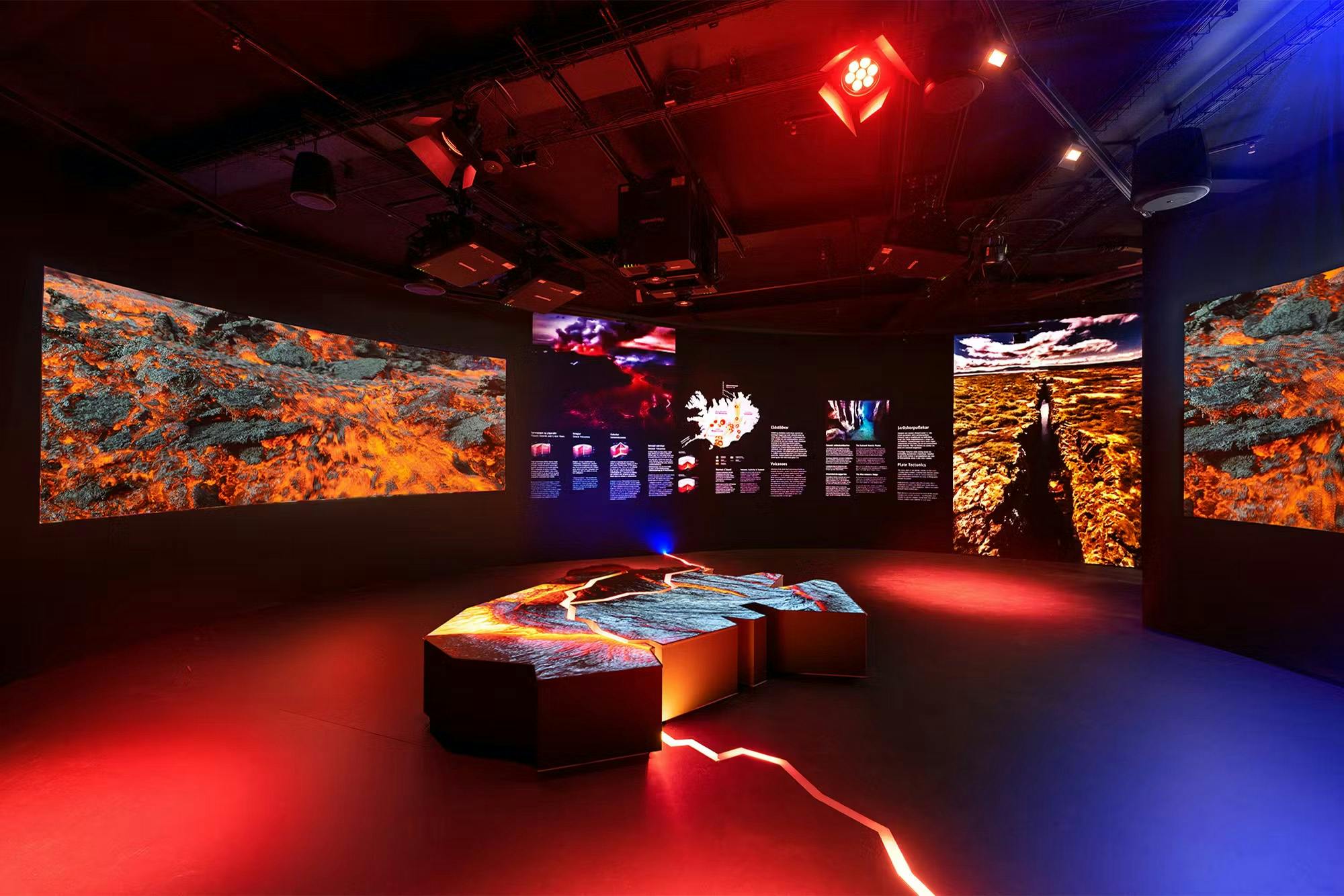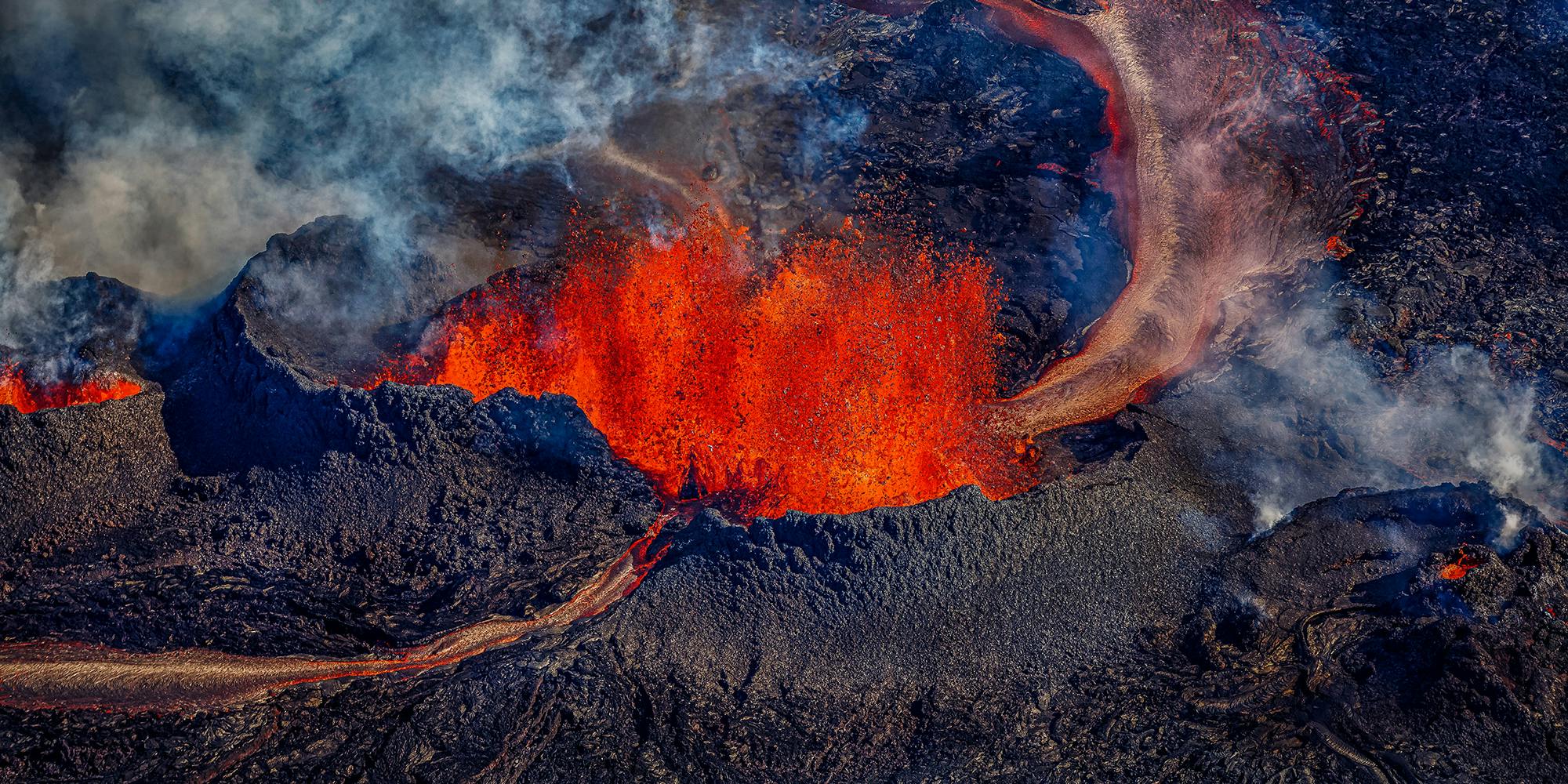
Guide to Holuhraun Volcano
The Holuhraun eruption began in August 2014 in the Bárðarbunga volcanic system, ending a few months later. After a swarm of thousands of earthquakes over several weeks, the eruption started, emitting vast volumes of sulfur dioxide, impacting air quality in parts of Iceland, especially in the East.
The so-called fissure eruption occurred in the Holuhraun lava field north of Vatnajökull Glacier in the Icelandic highlands northeast of the Bárðarbunga caldera. Lava fountains shot tens of meters into the air from the crack in the bedrock, craters were created around the eruptive vents and lava flow covered the area.
Was There an Ash Cloud Like Eyjafjallajökull?

The Holuhraun eruption did not occur underneath the ice cap, so there wasn't ash fallout. The airspace was closed three nautical miles around the eruption area up to 1,524 meters (5,000 ft)—meaning it did not affect commercial flights flying over Iceland. Meanwhile, Eyjafjallajökull became Iceland's most famous volcano after its eruption in 2010 halted air travel across Europe, stranding thousands of people for days.
How Long Did the Holuhraun Eruption Last?
The eruption ended in late February 2015 after six months of fiery lava shooting up from the earth. Locally, the event was referred to as a "tourist eruption," as tourists from around the world clamoured to get a glimpse of the lava. But the only people allowed close to the site during the eruption were journalists and scientists.
How Large Was the Eruption Area?

The eruption created a lava field of 85 km² (33 mi²), the largest to be produced in the country for hundreds of years.
Neighboring Volcano Systems

Holuhraun is located close to two large volcano systems; Askja's caldera is 9 miles to the north, and Barðarbunga's is 26 miles to the southwest. Directly to its south is the closest glacier, Dyngjujökull, which is part of the mighty Vatnajökull Glacier.
How To Get to the Holuhraun Site
Holuhraun is located in a remote area in the Icelandic central highlands, and given its distance from the major highland roads, it is challenging to reach. There is, however, an unnamed gravel road that leads from highland road F910. To access the area, you must have a vehicle that is approved to travel on Iceland's F roads.
Experiencing Holuhraun from Reykjavík

Perlan's Force of Nature exhibit, located in Reykjavik, introduces visitors to the relentless and awe-inspiring power of Earth's natural phenomena, with a particular emphasis on volcanic activity. The exhibit brings this momentous event to life, using a blend of advanced interactive technology and comprehensive scientific data.
Environmental Impact of Holuhraun
Volcanic eruptions produce massive quantities of greenhouse and poisonous gases. The gases were released at Holuhraun's volcanic fissure. Scientists revealed that the Holuhraun lava field continued to release Sulfur Dioxide and CO2 for three months after the eruption had stopped.
Some of Iceland’s most famous landscapes have formed around eruptions from active volcanoes in Iceland over the centuries.
FAQ

When did Holuhraun erupt?
The Holuhraun volcanic eruption began in August 2014 ending a few months later in the central highlands north of Vatnajökull.
What caused the Holuhraun eruption?
Volcanoes form when heat and pressure build up beneath the earth's surface. The earth's weak points tend to be along fault lines where tectonic plates converge or diverge, as in Iceland's case.
When did Bárðarbunga last erupt?
Holuhraun belongs to the Bárðarbunga volcanic system and is located in its northern part. The center of the main volcano, Bárðarbunga, is in a huge, ice filled caldera in Vatnajökull. The last eruptions inside the Bárðarbunga caldera occurred along and as precursors of the Holuhraun eruption 2014.
Is Bárðarbunga still erupting?
No, Bárðarbunga is not erupting.
Is it safe to visit Holuhraun?
The site is safe to visit, but you must have a vehicle approved to drive on F roads in Iceland. The Icelandic highlands are remote, with very unforgiving roads and river crossings. It is not safe to drive a regular rental car to the area.







